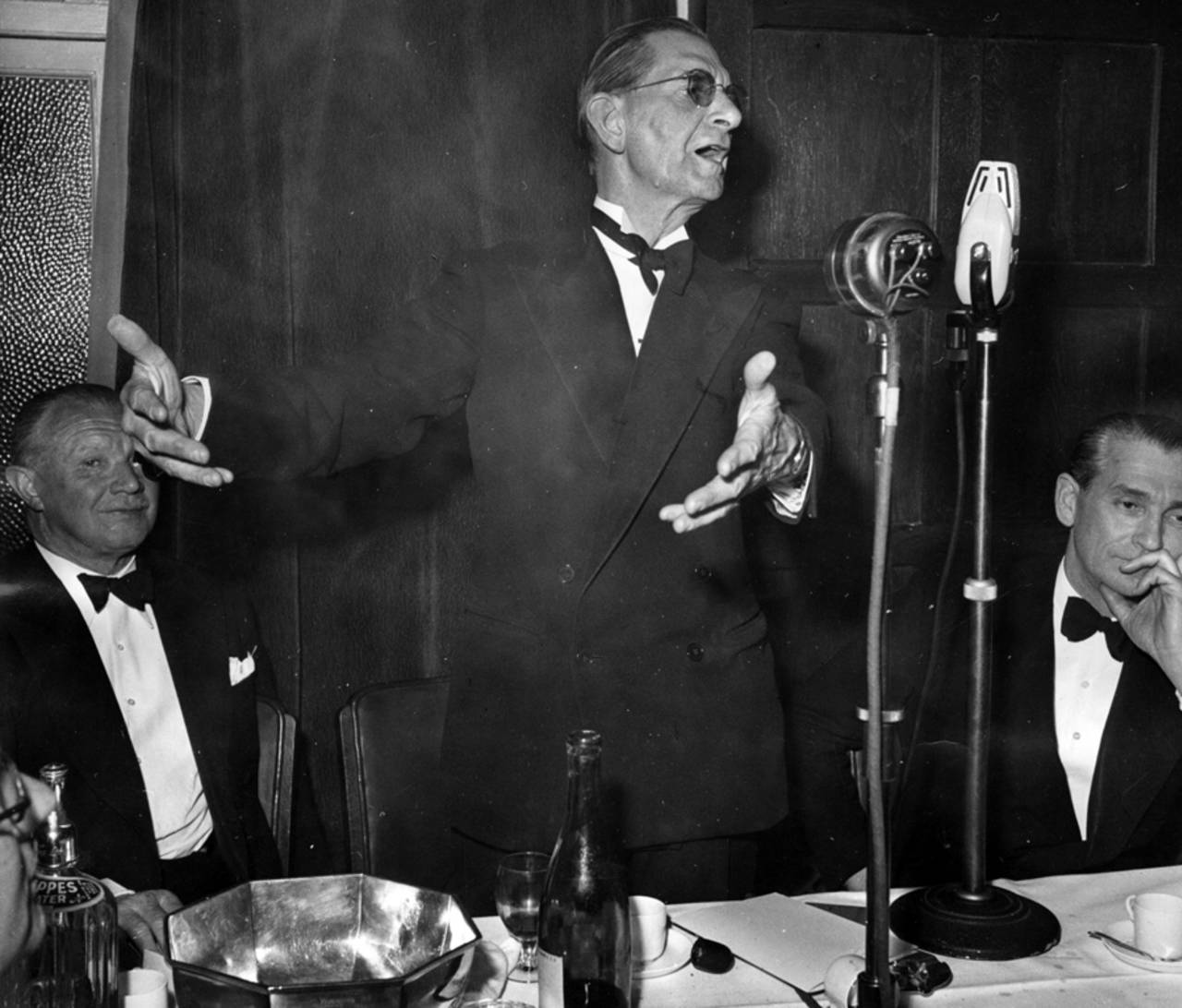The legend of Cardus lives on
Neville Cardus' writing is alive, full of daring and almost novelistic observation. Cricket writing owes him a debt of gratitude
Jon Hotten
13-May-2013

Neville Cardus "put in what the agencies left out" • Getty Images
Sometimes the past can come back with an unexpected force. Here is the last paragraph of Neville Cardus' essay on Don Bradman, published in 1930, shortly after the Don's 334 against England in Leeds. It was Bradman's seventh Test match yet he was already exhibiting a level of mastery not seen before, and one that seemed to threaten the random nature of the game.
"It is a hard world to please," Cardus wrote. "Perhaps by making a duck some day, Bradman will oblige those of his critics who believe that there should always be some strangeness, something unexpected, mingled with art and beauty."
Bradman did oblige, of course, with the most famous duck in cricket history almost two decades later. A year after Bradman's last Test innings came the first edition of Cardus On Cricket, which is republished by Souvenir Press this month. The legend of Bradman and the legend of Cardus endure.
Cardus was born in 1889, while Grace was still playing, and died in 1975, not long after the Test debut of Viv Richards. His vision was wide enough to span both of these worlds, which are probably unimaginable to one another. From Cardus On Cricket, Grace emerges through the fug of history as a living, breathing figure, a sort of proto-Sehwag or Gayle, hitting the ball harder and more often than anyone before him. In "The Champion", one of the longest pieces in the collection, Cardus recalls a conversation with a Yorkshire bowler who had been severely dealt with by the Doctor at Lord's many years before: "He broke mi [sic] heart, and when I got back to mi hotel I couldn't eat mi dinner. I went up to mi room, took off mi boots and let mi feet feel the cool of t'oilcloth. Then I got into bed and cried like a babby."
The writing is alive, full of daring and almost novelistic observation. In his line on the signs seen outside of the grounds in WG's time - "Admission threepence: if Dr Grace plays, sixpence" - are the intimations of cricket's commercial future. From the relentless perfection, the sheer un-dismissability, of Bradman, came: "He reminded me of the trapeze performer who one night decided to commit suicide by flinging himself headlong to the stage, but could not achieve the error because his skill had become infallible". On the "good fortune" of seeing Jack Hobbs bat in the nets one morning, he noted Hobbs' "beautiful white bat, and as he made stroke after stroke, he would glance solicitously at the face of his blade, as if reluctant to do it harm".
Watching Lancashire versus Yorkshire in the spring of 1922 he described "the crowd's mountainous bulk, the hard antagonism of the play, the ugliness of the setting of chimneys and huddled tenements". On the premature death of a popular Yorkshire cricketer called Roy Kilner: "it is like being told a genial Yorkshire breeze has died and will never again blow over the face of men and refresh them".
All of this on a game that had, until Cardus, been recorded by prosaic reporting of its numbers. As Scyld Berry wrote: "If you wish to understand the significance of Neville Cardus, take the agency report of any cricket match. 'On the first day the home side scored 268 for 5, the highlight being a century by so-and-so with two sixes and nine fours. The standout bowler was X, who took 4 for 65'. Cardus put in what the agencies left out."
I think he would have liked the great clamour of voices that arise from social media, and the intense inspection of the televised game. In their different ways, they are trying to enter that hinterland that Cardus first described. Like Grace or Bradman, like Sehwag or Gayle, he showed a way towards the future.
Cardus On Cricket and A Fourth Innings With Cardus are published by Souvenir